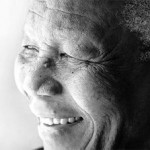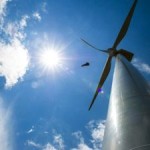
Investing in Sustainable Energy Futures: Multilateral Development Banks’ Investments in Energy Policy, a report released by the World Resources Institute (WRI), analyzes energy-related loan programs at the World Bank, ADB and IDB in addition to the newly created Clean Technology Fund (CTF). The report is being launched this week at the annual spring meetings of the World Bank Group and the International Monetary Fund.
“Over the last five years, MDBs have engaged countries on critical elements of sustainable energy and have launched several specialized initiatives to promote clean energy and low carbon technologies,” said Athena Ballesteros, Manager of WRI’s International Financial Flows and the Environment Project. “However, if the development banks are going to finance climate change solutions in the future, they need to help developing countries put in place new, and more effective forms of oversight, pricing, and investment incentives that promote long-term investments in sustainable energy.”
Ballesteros added, “In most countries, policies and regulations currently tend to emphasize short-term costs and supply rather than the long-term benefits of clean technologies.”
The report finds that despite increased support for low carbon energy technologies, many loan programs do not address aspects of electricity policy, regulation, institutional capacity and governance that would enable investments in sustainable energy over the long-term. The findings are based on a framework developed by WRI that builds on the Electricity Governance Indicator Toolkit – a set of indicators benchmarking best practice and promoting accountability in the electricity sector.
The report makes the case for systematic attention to the following issues:
- Long-term Integrated Electricity Planning
- Policies and Regulations Encouraging Energy Efficiency
- Policies and Regulations Promoting Renewable Energy
- Pricing Structures Encouraging Efficiency and Reducing consumption
- Subsidy Reform to Reveal the True Costs of Fossil Fuesls and Promote the Viability of Sustainable Energy Options
- Executive Agencies’ Capacity for Sustainable Electricity
- Regulators’ Capacity to Oversee Implementation of Sustainable Electricity Policy
- Utilities’ Capacity to Promote Energy Efficiency and Renewables
- Transparency of Policy, Planning, and Regulatory Processes for Electricity
- Stakeholders’ Engagement in Policy, Planning, and Regulatory Processes

A relatively small number of MDB projects address the elements of sustainable energy listed above. Of the 31 World Bank loans reviewed, only 10 consider 5 of the 11 elements. The IDB considers at least 5 of the elements in 10 of 19 loans and the ADB considers more than 5 elements in 10 of 29 projects.
The report also reviews the investments made by the MDB administered Climate Investment Funds (CIFs), particularly the $4.73 billion Clean Technology Fund. While the Funds address some of these elements, the research concludes attention to them has been uneven. The CIFs represent more public finance than has ever before been dedicated to climate change.
Smita Nakhooda, a senior associate at WRI, said “A greater focus on institutional capacity and governance will be key to supporting developing countries to pursue low carbon energy options that effectively meet development needs without compromising the poor.”
Source: WRI, April 23, 2010














